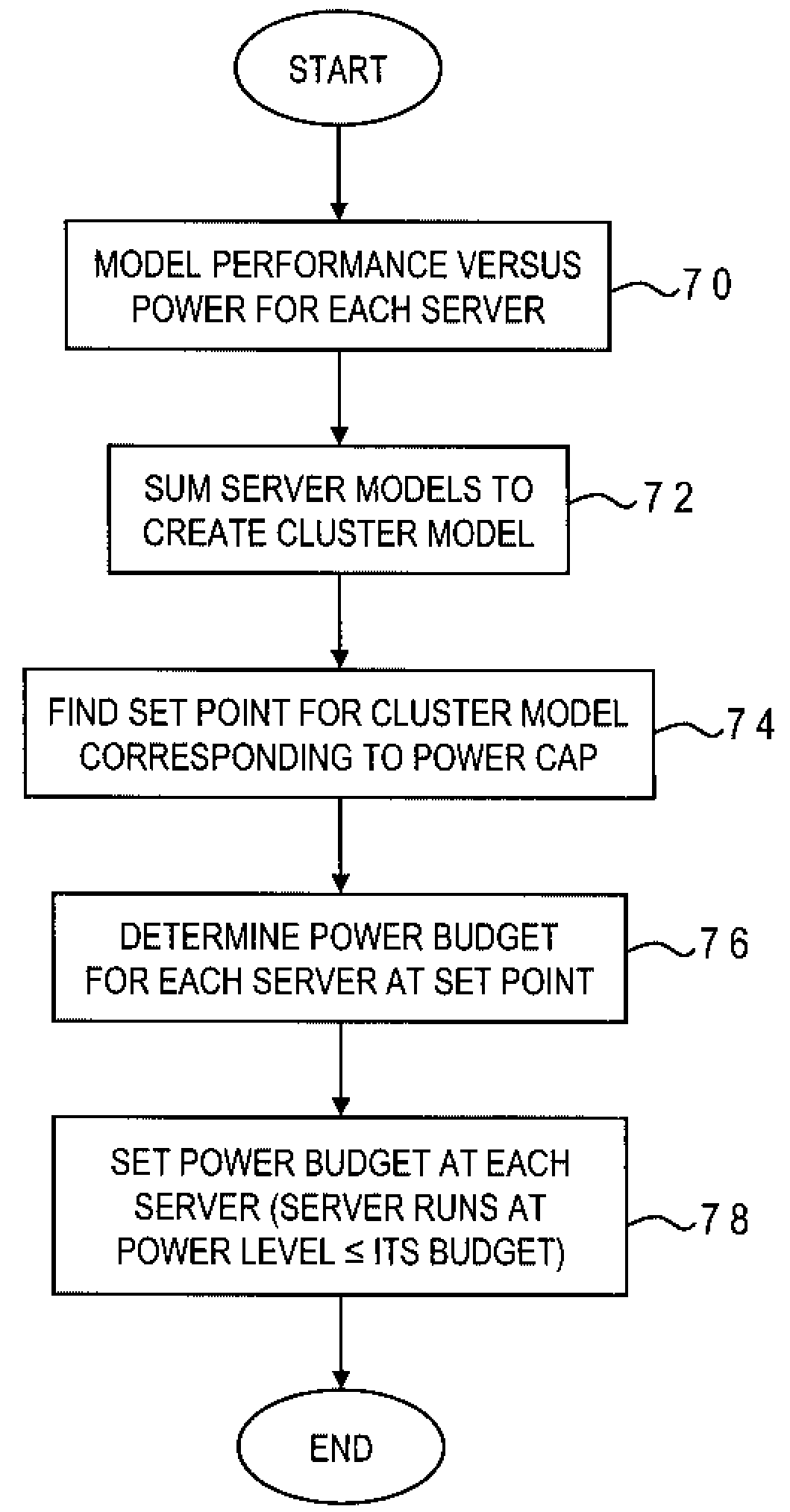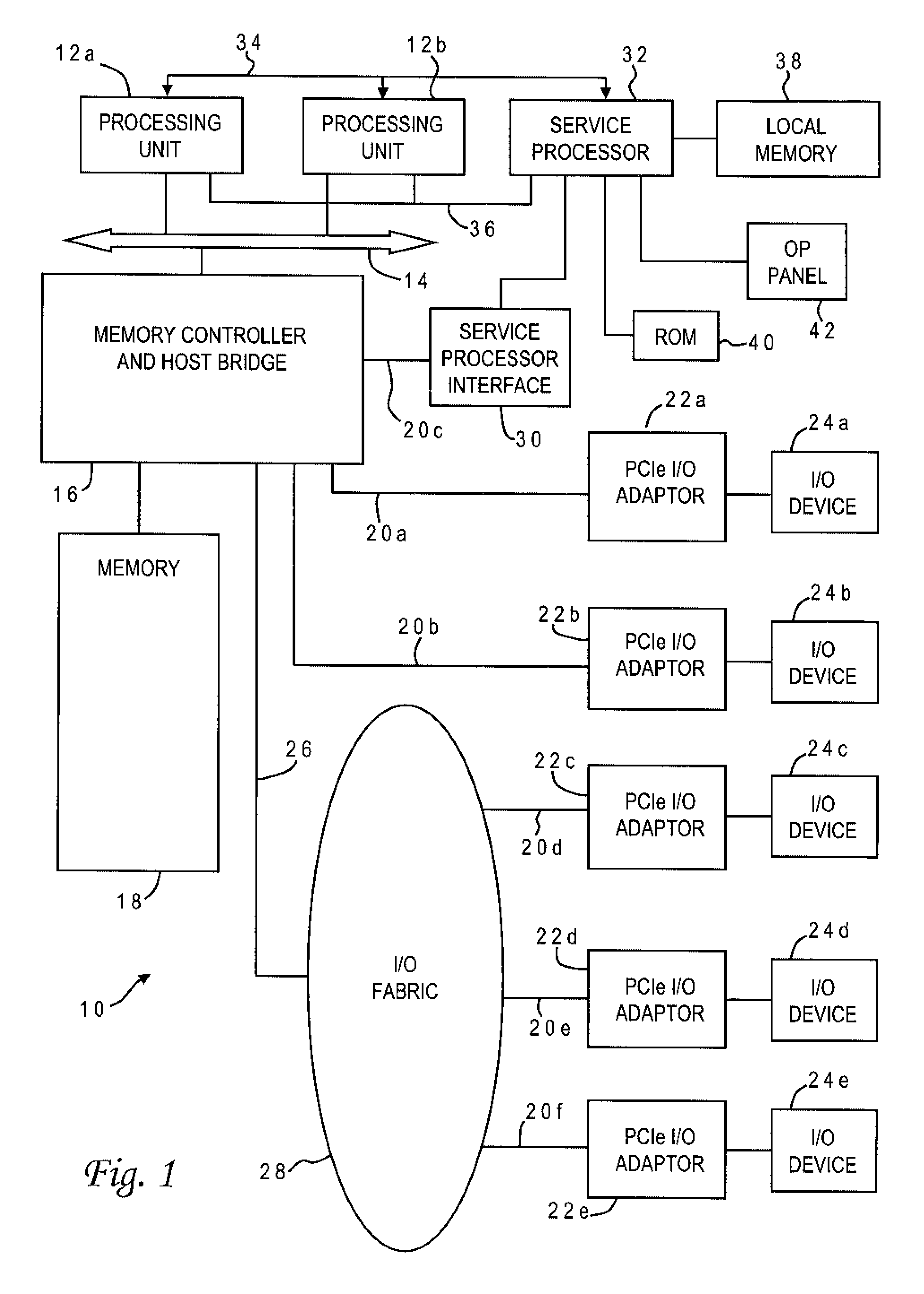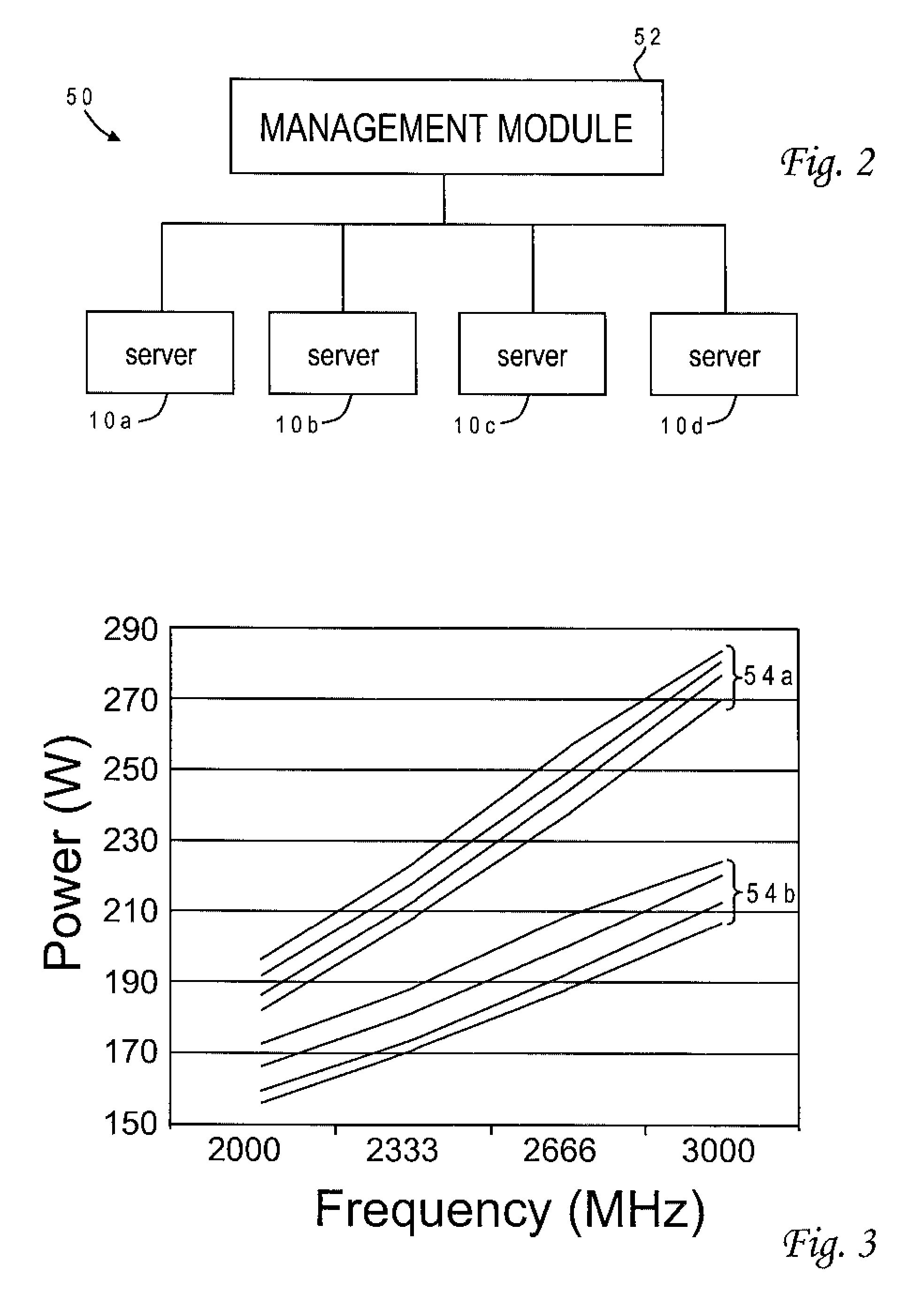Method for Equalizing Performance of Computing Components
a computing component and performance equalization technology, applied in the field of computer systems, can solve the problems of data centers, generation of data processing systems, and inability to meet physical capacity, and achieve the effect of cost prohibitive to provide additional power resources to the data center, and data centers that cannot meet physical capacity
- Summary
- Abstract
- Description
- Claims
- Application Information
AI Technical Summary
Benefits of technology
Problems solved by technology
Method used
Image
Examples
Embodiment Construction
)
[0021]With reference now to the figures, and in particular with reference to FIG. 1, there is depicted one embodiment 10 of a computer system constructed in accordance with the present invention. Computer system 10 is a symmetric multiprocessor (SMP) system having a plurality of processors 12a, 12b connected to a system bus 14. System bus 14 is further connected to a combined memory controller / host bridge (MC / HB) 16 which provides an interface to system memory 18. System memory 18 may be a local memory device or alternatively may include a plurality of distributed memory devices, preferably dynamic random-access memory (DRAM). There may be additional structures in the memory hierarchy which are not depicted, such as on-board (L1) and second-level (L2) or third-level (L3) caches. In the illustrative implementation, computer system 10 is a server. Any of the components of server 10, and in particular processors 12a, 12b, may be provided as field-replaceable units. While only two proc...
PUM
 Login to View More
Login to View More Abstract
Description
Claims
Application Information
 Login to View More
Login to View More - R&D
- Intellectual Property
- Life Sciences
- Materials
- Tech Scout
- Unparalleled Data Quality
- Higher Quality Content
- 60% Fewer Hallucinations
Browse by: Latest US Patents, China's latest patents, Technical Efficacy Thesaurus, Application Domain, Technology Topic, Popular Technical Reports.
© 2025 PatSnap. All rights reserved.Legal|Privacy policy|Modern Slavery Act Transparency Statement|Sitemap|About US| Contact US: help@patsnap.com



